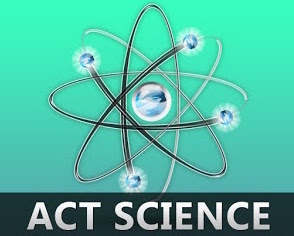 by Catherine Tierney
by Catherine Tierney
Let’s face it: the ACT science section is a curveball. Some students find it so challenging that they discount the ACT entirely and take the SAT instead. This may be the right call for some students, but many students who find the ACT Science section so challenging can easily improve their scores if they break some bad testing habits. When students hear about these so-called “bad habits,” they are usually surprised because they are often encouraged in class work at school.
First, some basics. The ACT science section is the last section on the test (though it falls before the optional writing section). The section contains 40 multiple choice questions split up into 6 or 7 smaller “passages.” These passages present data, describe an experiment, or lay out competing views of scientific phenomena. Students have 35 minutes.
Mistake #1: Studying science notes from class
Though the ACT science section is called ‘science,’ it is not a science content test. Students are not asked to balance equations, recite the photosynthesis equation, or sort organisms into Kingdoms. Thus, jamming 4 years of high school science content into your head is not a good use of time when preparing for the ACT. That said, each science section will have between 2 and 4 questions that require some use of science content knowledge, but the topics are completely random and cannot be easily predicted. The best way to prepare for these questions is to do well in high school science classes. If a student is going to invest time in reviewing one topic for the ACT science section, they should make sure that they know the pH scale.
Mistake #2: Reading too closely
One of the first things students notice about the science section is how many words there are. Some of the passages look more like reading passages than science passages. However, many of these words are completely extraneous. Students often get slowed down because they try to read and understand every word on the page. You don’t get points for reading the passage, you get points for answering questions, and much of what is on the page will not be asked about in the question. Your best bet is to go right to the questions to identify key words and phrases, and then skim the passage and figures to find these words. The strategy can be clunky at first, but, with practice, ultimately saves most people valuable time.
Mistake #3: Doing all the passages and questions in order
There are three distinct types of passages in the science section that vary based on the ratio of figures-to-text on the page. None of these passages are inherently more difficult than the rest, but each student will find that one feels much easier. The catch is that these passages fall in a different order on every test. Students should plan on doing their strongest passage type first so that they pick up as many “easy” points as possible before moving on to the passages that they find more difficult and time consuming.
The science section is a sprint, which is made even more difficult by the fact that it falls at the end of an already long test. Success on the science is more about efficiency than intellect. Students should practice several different strategies before test day to figure out what works best for them.




